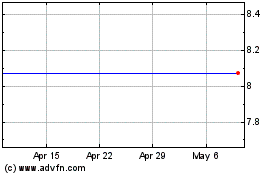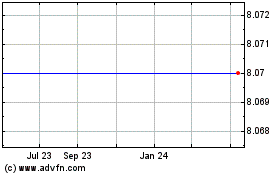By Ellie Ismailidou and Sara Sjolin, MarketWatch
Technical pressures were also contributing to the stock selloff,
analysts said.
U.S. stocks pared early losses Tuesday in midafternoon trade,
but were still in the red as energy shares came under pressure.
The main benchmarks slumped Tuesday after five straight sessions
of gains
(http://www.marketwatch.com/story/us-stocks-set-to-take-a-breather-after-three-week-rally-2016-03-07),
as a pullback in oil prices and fresh worries about China's
economic woes weighed. So-called technical resistance also was
behind Tuesday's downdraft after a roughly 10% rise since mid
February in the Dow and the S&P 500, some market participants
said.
Gains in utilities and consumer-staples stocks--traditionally
viewed as safety plays in times of market unrest--imply that
investors remain cautious in the wake of the recent rally.
The S&P 500 lost 12 points, or 0.6%, to 1,988, led by sharp
losses in the energy, off 3%, and materials sectors, 1.9% lower.
The Dow Jones Industrial Average recovered from a 115-point drop
near the open to trade 40 points, or 0.3%, lower at 17,025, led by
a 3% drop in shares of Caterpillar Inc. (CAT)
Meanwhile, the Nasdaq Composite lost 25 points, or 0.5%, at
4,682.
Crude-oil prices tumbled Tuesday, after closing Monday at the
highest level of the year
(http://www.marketwatch.com/story/crude-prices-add-to-gains-in-an-increasingly-bullish-market-2016-03-07)
on hopes that major producers will curtail supply. On Tuesday, the
market resumed its doubts over the potential for an output freeze
(http://www.marketwatch.com/story/oil-pulls-back-after-big-run-brent-sticks-above-40-2016-03-08)
as traders bet that weekly data will reveal a fourth straight climb
in U.S. crude inventories.
The drop in oil weighed on the shares of energy companies, with
the energy sector leading the losses on the S&P 500, down more
than%, while energy names like Chevron Corporation (CVX) and Exxon
Mobil Corp. (XOM) were among the biggest decliners on the Dow.
Technical pressures were also contributing to the stock selloff,
analysts said.
There was "technical resistance" Tuesday after a recent "very
powerful run" over the past couple of weeks fueled by the strong
bounce in oil prices, said Phil Orlando, equity market strategist
at Federated Investors.
"Some consolidation is warranted," Orlando added, placing the
resistance levels at the 2,000-2,030 range for the S&P 500.
Another reason the market may face headwinds, is that U.S. bank
shares had recently enjoyed "an oversold bounce" as investors'
fears that the Federal Reserve would join the European Central Bank
and the Bank of Japan in a negative-interest-rate policy abated,
said Tim Anderson, managing director at MND Partners, in emailed
comments.
On Tuesday, the S&P financial sector was down 1.5%, posting
the third-worst performance on the index while financial giant Visa
Inc. (V) was among the biggest decliners on the Dow, down 1.3%.
Investors were also bracing for a key meeting by ECB policy
makers on Thursday
(http://www.marketwatch.com/story/5-things-to-watch-for-at-thursdays-key-ecb-meeting-2016-03-08),
for which the market has already priced in the expectation of
further easing measures. But after an underwhelming set of easing
measures in December roiled markets all over the world, analysts
fear investors are setting themselves up for major disappointment
again.
China blues: Early pressure on global stocks came after Chinese
trade data showed exports tumbled for an eighth straight month
(http://www.marketwatch.com/story/chinas-exports-tumble-for-8th-month-in-a-row-2016-03-07),
in another sign a slowing global economy is undercutting growth in
the world's second largest economy.
"Will China again be the factor that breaks the bulls? Overnight
the trade data from the world's second-largest economy was truly
awful," said Richard Perry, analyst at Hantec Markets, in a
note.
Data showed exports fell 25.4% in February, compared with the
15% expected, while imports were down 13.8%. Perry noted that
though double-digit declines were expected for both imports and
exports, those drops drive real concerns about the pace of China's
economic slowdown.
"Not only does this reflect badly on the emerging markets that
supply China, but also the state of global demand," he said.
Read: Why 2016's gold rush is already running out of steam
(http://www.marketwatch.com/story/why-2016s-gold-rush-is-already-running-out-of-steam-2016-03-07)
Movers and shakers: Shares of SunEdison Inc. (SUNE) jumped 17%
after Vivint Solar (VSLR) said it has terminated its merger
agreement with SunEdison
(http://www.marketwatch.com/story/vivint-terminates-sunedison-takeover-deal-2016-03-08-7103646)after
mounting financial woes kept the solar-energy company from meeting
obligations of the deal.
Urban Outfitters Inc. (URBN) soared 16% after the company posted
a profit fall that beat forecasts late Monday.
JetBlue Airways Corp. (JBLU) lost 7.2% after the airliner
projected a first-quarter unit revenue decline
(http://www.marketwatch.com/story/jetblue-gives-downbeat-outlook-as-february-unit-revenue-falls-2016-03-08).
(http://www.marketwatch.com/story/jetblue-gives-downbeat-outlook-as-february-unit-revenue-falls-2016-03-08)Shares
of Seadrill Ltd. (SDRL.OS) plunged 17%, falling after a recent
rally. The offshore driller surged 121% in U.S. trade on Friday
after what analysts called a major short squeeze
(http://www.investopedia.com/terms/s/shortsqueeze.asp).
The Norwegian company's chief executive told Reuters
(http://uk.reuters.com/article/seadrill-refinancing-idUKL5N16F1EQ)
he expects refinancing from banks to come through during the second
quarter, and said that short sellers are "beginning to panic" at
the prospect.
Shares of Apple Inc. (AAPL) were down 0.5%, after the Supreme
Court declined Apple's request for a review of an e-books
(http://www.marketwatch.com/story/supreme-court-turns-away-apple-appeal-in-e-books-antitrust-case-2016-03-07)
antitrust case, leaving the iPad maker facing a payment of $400
million to e-book consumers.
Shares of Shake Shack Inc. (SHAK) dived 12% after the burger
chain late Monday posted a lackluster sales forecast
(http://www.marketwatch.com/story/shake-shack-posts-lackluster-sales-forecast-2016-03-07).
Data: The NFIB small business index for February fell 1 point
(http://www.nfib.com/surveys/small-business-economic-trends/) to
92.9, with none of the 10 components posting a gain.
"Overall, a 'ho hum' outcome, confirming that the small business
sector is not headed up with any strength, just treading water
waiting for a good reason to invest in the future," the NFIB said
in the release.
There are no Federal Reserve speakers on tap, as the central
bank is in its so-called blackout period ahead of next week's
policy-setting meeting.
Other markets: Asian markets ended mixed after the lackluster
Chinese trade data, although the Shanghai Composite Index eked out
a gain to close higher for a sixth straight session
(http://www.marketwatch.com/story/china-stocks-plunge-dragging-down-asian-markets-2016-03-07).
European stock markets ended lower
(http://www.marketwatch.com/story/european-stocks-fall-after-surprise-plunge-in-chinese-exports-2016-03-08)
almost across the board, with commodity firms bearing the brunt of
the selloff.
Metals traded mixed, while the dollar weakened
(http://www.marketwatch.com/story/dollar-hits-one-week-low-against-yen-as-nikkei-weakens-2016-03-08)as
the China trade data renewed worries about global growth.
(END) Dow Jones Newswires
March 08, 2016 12:33 ET (17:33 GMT)
Copyright (c) 2016 Dow Jones & Company, Inc.
MEMC Electronic (NYSE:WFR)
Historical Stock Chart
From Mar 2024 to Apr 2024

MEMC Electronic (NYSE:WFR)
Historical Stock Chart
From Apr 2023 to Apr 2024
